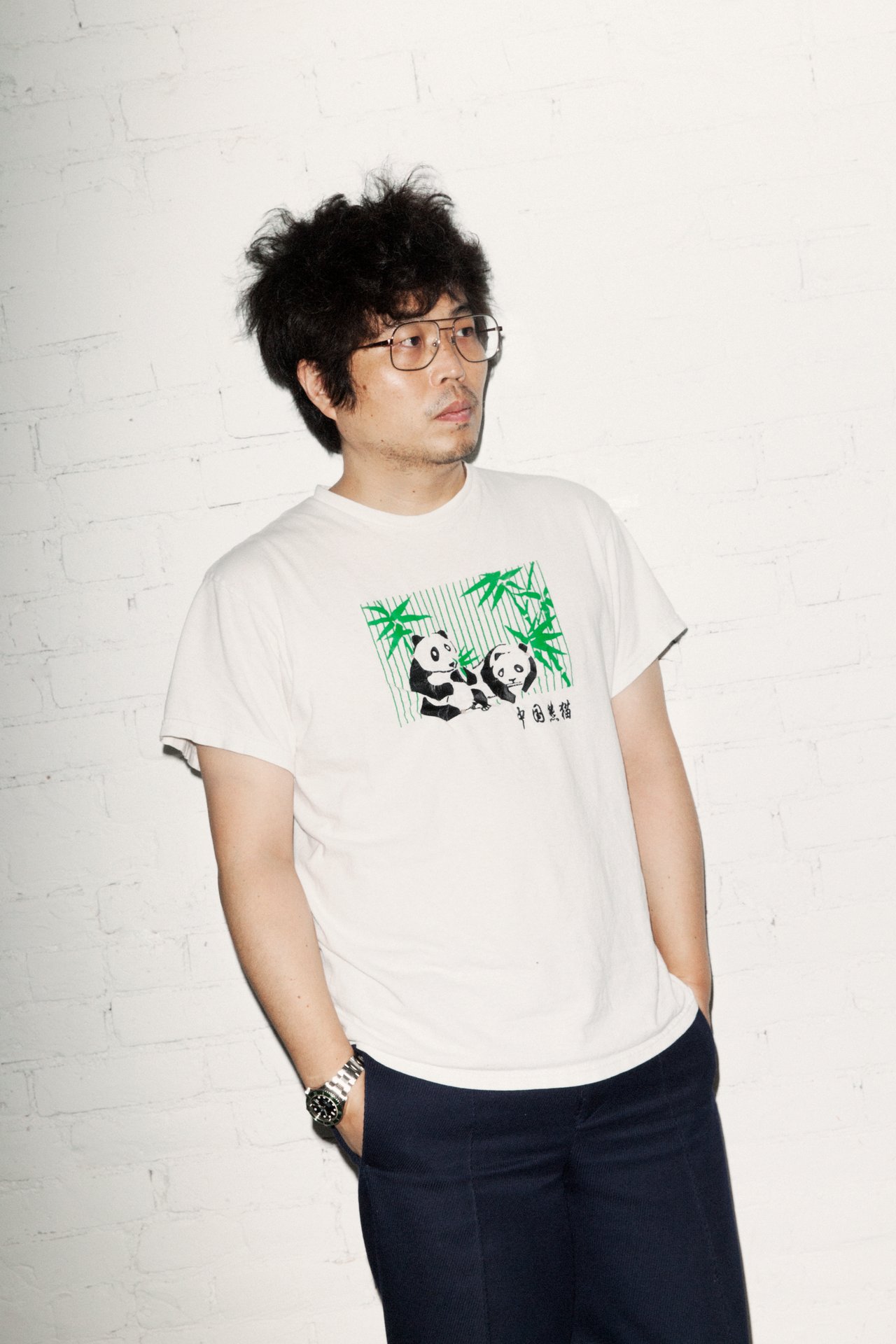Chances are you know Ryuhei Oomaru – either from directly working with him and his team for sampling and manufacturing, or through his collections, which he showed during NYFW: Men’s.
Oomaru is the founder of design development and production studio Oomaru Seisakusho 2 and unisex ready-to-wear brand, OVERCOAT. We touched base with Oomaru to gauge his perspective on being an Asian-American as both a designer and manufacturer.
Tell us about yourself and what sparked your interest in design.
I grew up in Fukuoka, a prefecture in Japan’s Kyushu Island. My grandfather was a wood craftsman who made propellers during WWII. Post-war, he started making furniture from his studio in our home. I grew up surrounded by his creations, so pursuing a career in design and craft came naturally to me. Instead of using a hard material like wood, I decided to use something soft to make my creations. When I was 16, I purchased a book about men’s tailoring and started to make clothes in my room. This was my first step into fashion. I brought this book with me to NYC and still have it on my bookshelf.
When and why did you travel to New York?
In 2006, I was freelancing in Tokyo and was offered jobs from several companies including the LVMH group in NYC. I thought it could be an interesting opportunity and I didn’t have any reason to say no.
How have you adapted to immigration?
Even after 12 years of living in NYC, language-wise, I sometimes still feel like a fish out of water, but I do consider it my home.
What really helped me adapt to this new environment was my work. It became my interpreter. My clothes spoke a thousand words and through making clothes, I met my colleagues and clients.
Congratulations on your newborn son. Do you plan to teach him about American and Japanese culture?
I think my son will learn the American heritage and lifestyle through his everyday life living in NYC, but I will need to make an effort to teach him about his Japanese heritage. What we do and how we work at our studio is where my heritage lives in NYC, so I try to bring my son to the studio whenever I can.
I also plan on incorporating a lot of Japanese food in his diet. The Japanese respect the four seasons and certain foods are served during certain occasions throughout the year, so I think food is a meaningful way to introduce Japanese traditions to him.
Through Oomaru Seisakusho 2 and OVERCOAT, how do you stay true to your heritage?
I think my Japanese heritage comes out when I am designing the OVERCOAT collection as I am always drawn to the idea of minimalism which is often seen in Japanese aesthetics. Also, with Oomaru Seisakusho 2, it comes out in the form of respecting teamwork and working with others.
How are you able to modernize and include your heritage into your work?
I think Japanese craft is known for its precision and functionality.
The Japanese are good at thinking logically and following a process. I do not let emotions lead my design; rather, I try to find a logic within creativity. For example, in pattern making, I start by creating a grid, which acts as a base for all of the lines I draft. I try not to draw emotional lines.
At Oomaru and OVERCOAT, we try to challenge ourselves by creating new standards with precision and functionality. I have a book written by a Japanese tailor right after World War II. He predicted that post-war, the definition of the amount of space between the human body and garments would change drastically. Pre-war, this space was determined by functionality; there had to be a specific amount of space between the body and garment for the wearer to be able to move. Now, this space is subject to design, whether it is a body-tight jumpsuit or an oversized jacket.
What does Asian-American Pacific Heritage Month mean to you?
It makes me realize how much Japanese culture is highly respected here, which is clearly the achievement of our predecessors.



